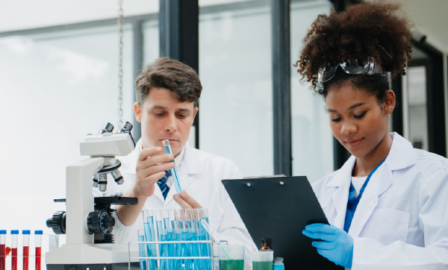2023 Diagnostics Trends
Read our updated trends report here: 2025 Diagnostic Trends
Clarkston’s team of life sciences consultants have highlighted the top diagnostics trends that businesses should consider. Read all 5 trends for 2023 by downloading the full report here.
Diagnostic testing is essential for almost all life science operations, as its implications range from medical device manufacturing, to patient care and reporting, to laboratory operations. The trends in diagnostics follow these applications with a contemporary emphasis on data and the end-user experience through connection to the Internet of Things. In such a mature market, innovations and operational excellence will be a necessity for growth with players in this industry.
2023 Diagnostics Trends
Trend #1: Wearable Technology for Real-time Diagnostics
Driven by the increased expectations for convenience, ease of mind, and value-added technology of consumers today, there has been a substantial rise in the use of wearable technologies. These devices can provide tremendous amounts of valuable, real-time data on user health and activity. Instead of capturing a snapshot of a consumer’s health through blood samples from a lab or after visiting a healthcare professional for a diagnostic exam, wearable technology – like an Apple Watch or a Fitbit – provides continuous recording of health metrics that allow for pattern recognition in detecting health risks and alerting users on unusual health scenarios without delay. Another example would be the Omron HeartGuide, the first smartwatch to receive FDA approval for blood pressure monitoring capabilities, which holds readings that can be reviewed in a mobile app and shared with the user’s physician for insight, treatment, and next steps.
Wearable technology is also being used in hospitals to provide patient deterioration detection; the Philips wearable biosensor is a five-day disposable patch that adheres to the skin to track vital signs indicative of patient deterioration, especially for those patients moving from ICUs to lower acuity areas in a hospital. This provides the ability to detect early warning signs and contextual recovery indicators like movement and ambulation.
Since consumers value their connection to the Internet of Things (IoT), having a device that not only acts as an augment to a smartphone, article of clothing, or fitness tracker, but can also collect and monitor health data that provides considerable quality of life improvements is extremely appealing. With the forecasted number of connected wearable devices set to eclipse one billion in 2022, this market demand is also reflective of consumers’ increased desire to take control of their own personal health and well-being. Continue reading by downloading the full report below.
Download the Full 2023 Diagnostics Trends Report Here
Subscribe to Clarkston's Insights



